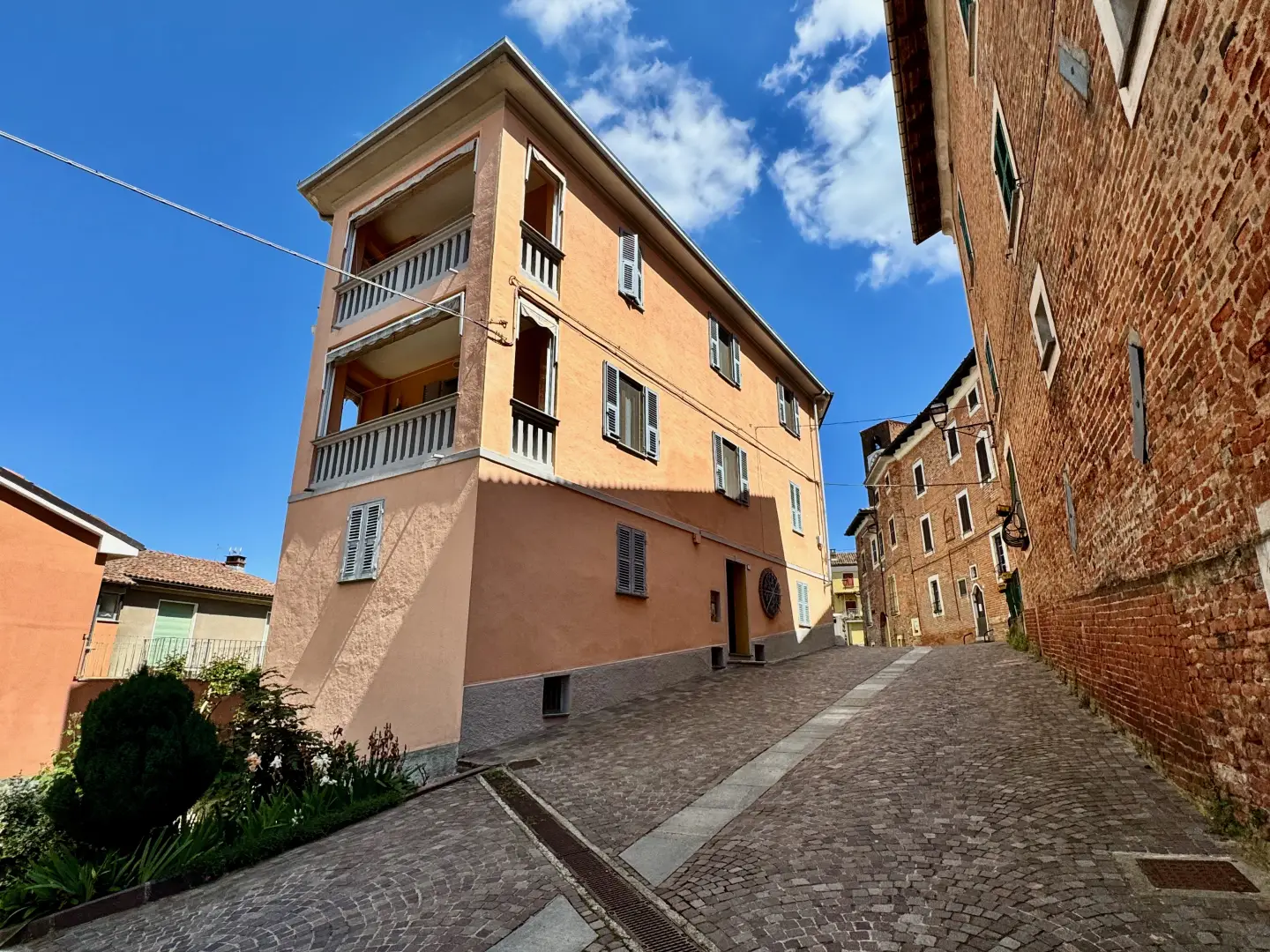Mombaruzzo

Access
Accessible by car from Asti and Acqui Terme, Mombaruzzo is also connected by the regional railway, making it easy for those wishing to discover the Monferrato area without a car. Its hilly position makes it an ideal starting point for excursions on foot or by bicycle among vineyards, woods and rural landscapes. There is no shortage of vantage points from which to admire the countryside dotted with farmhouses and bell towers, in a setting that preserves the charm of the Piedmont hills.
Introduction
Mombaruzzo is a small commune in Piedmont located in the province of Asti, about 34 kilometres south-east of the provincial capital, in the heart of the Monferrato hills. Perched on two hill ridges, the town dominates the surrounding landscape with its compact structure and well-preserved historic centre. The name has its roots in ancient times: according to the most accredited interpretation, it derives from the Latin mons (mountain) and from a pre-Latin term barros (sterpeto), indicating a wooded high ground. Alternatively, some scholars propose the Gallic origin of the place name, referring to 'barr-', summit. Known since the Middle Ages for its strategic position and the castle that belonged to the Marquises of Monferrato, Mombaruzzo is today renowned above all for the production of macaroons and the quality of its wines. Its discreet charm attracts slow tourism, linked to food and wine, nature and historical-artistic heritage.
Description
The territory of Mombaruzzo covers an area of just over 22 km² and has the typical features of the Basso Monferrato hilly landscape: gentle slopes planted with vineyards, fields, scattered woods and small hamlets. The average altitude is 275 metres, but the hilly layout guarantees open panoramic views, which on clear days extend as far as the Alps. This scenery has helped define the agricultural and rural identity of the village, favouring a lifestyle linked to the natural rhythm of the seasons. The landscape is dotted with farmhouses, wine cellars and small churches, which tell an ancient and still living story.
The origins of Mombaruzzo date back to the early Middle Ages: documented in 1014 as Montebarucium, it was included in the committee of Acqui. During the 12th century it came under the influence of the Marquises of Monferrato and was involved in the conflicts between Monferrato and the city of Alessandria. In 1224, a deed of pledge with Emperor Frederick II testifies to the importance of the village. Over the centuries, the fief changed hands several times, including the Bressano, the Grassi, and several noble Genoese families such as the Nigro and the Lercari, up to the Pallavicini. The traces of this past can be found in the Renaissance portals of the historic centre, in the remains of the walls and in the tower of the ancient castle, which still dominates the outline of the town.
The local economy is firmly anchored in wine-growing: Mombaruzzo is immersed in one of the areas most suited to the production of fine wines, with numerous farms and wineries offering outstanding labels, including Barbera, Moscato and Brachetto. In addition to wine, the town's fame is linked to amaretti, typical sweets made with almonds and egg whites, produced according to recipes dating back to the 19th century. Confectionery craftsmanship, combined with wine-making, constitutes an identity pair that is reflected in the tourist offer, made up of tastings, cellar visits, markets and popular festivals. Small craft activities and family industries complete the economic fabric.
Cultural and religious life revolves around a rich and articulated architectural heritage. The parish church of Santa Maria Maddalena, with its polychrome marble high altar dating from 1771, is one of the village's most impressive presences. The Church of Our Lady of the Assumption, which preserves 15th-century frescoes and noble tombstones, and the Church of Sant'Antonio Abate, with its terracotta façade and harmonious Gothic proportions, are also of particular interest. The most curious buildings include the Church of the Crib, which preserves a 13th-century sculpted tile, and the parish church of San Marziano, now closed but still visible, flanked by the oratory of San Bernardino. The historic palazzos, such as Palazzo Pallavicini and Palazzo Prato, also bear witness to the noble past and the sober elegance of Piedmontese tradition.
The hamlets of Casalotto, Cervino, Bazzana and Boschi contribute to strengthening the link between the village and the territory. Cervino, in particular, houses the railway station on the Asti-Acqui line and the historic cooperative winery. Casalotto preserves the parish church of San Bernardino da Siena and Bazzana stands out for its visibility along the state road. The fractioned configuration of the municipality reflects the traditional dispersion of the hillside settlement.
Mombaruzzo is also a place of events and traditions: the patronal festival dedicated to Santa Maria Maddalena, food and wine events and classical music concerts in the church of Sant'Antonio Abate represent occasions to meet and enhance the local heritage. The presence of tourists, especially in the summer months, is favoured by a growing accommodation offer and the rediscovery of slow tourism, which favours authentic and uncrowded places.
Information
Area: 22.11km²
Altitude: 275m
Maximum elevation: 275m - summit name
Number of inhabitants: 1,226 as of 31.12.2024
Name in dialect: Mombarus
Name in dialect: Mombaruzzesi
Patron Saint: Santa Maria Maddalena, celebrated on 22 July
Bordering municipalities: Bruno, Carentino, Cassine, Castelletto Molina, Castelnuovo Belbo, Fontanile, Gamalero, Maranzana, Nizza Monferrato, Quaranti, Ricaldone
Website: www.comune.mombaruzzo.at.it